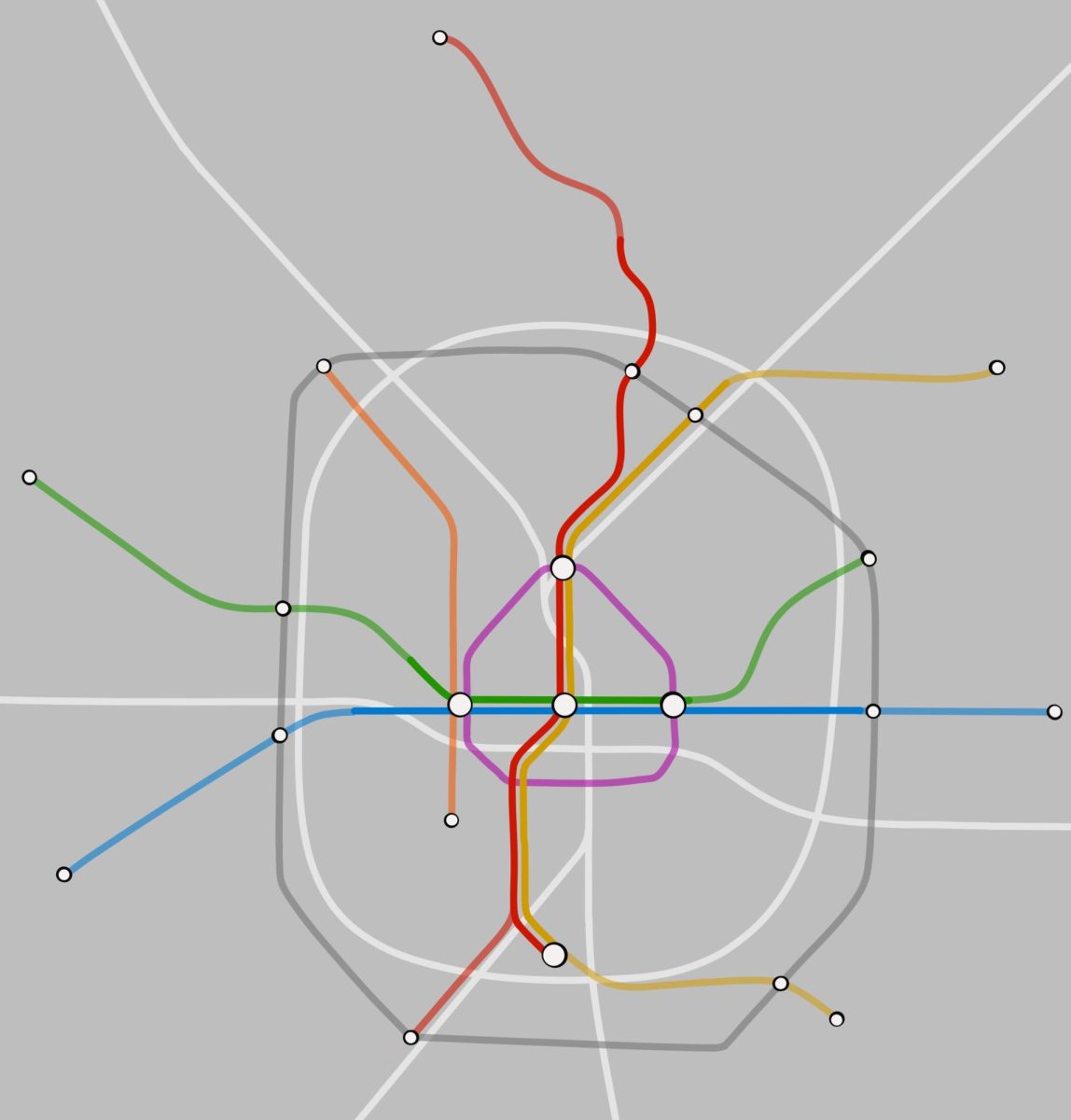It has been 53 years since the Metro Atlanta Rapid Transport Authority, or MARTA, was first introduced to Atlanta, and 24 years since any new destinations were added.
In MARTA’s history, there has never been more than the four original rail lines. While MARTA’s creation was forward thinking for its time, Atlanta has grown substantially in physical area and population since then, rendering MARTA outdated and in desperate need of a revival.
Introduced in 1971, MARTA began operating bus lines in the Atlanta area. Eight years later, the first rail lines were constructed. Since then, there have been few minor expansions made to the rail network, with the most recent in 2000. While beneficial, these expansions are simply not enough.
MARTA has four rail lines, running in the four cardinal directions. Compared to the intricate metro networks of cities like New York, San Francisco, Chicago, Washington DC or Boston, where the train systems reach almost every area, the MARTA system looks primitive. All lines converge at the Five-Points station downtown, making a chokepoint of travel where every MARTA rider has to go through. While Atlanta’s large population of 6 million people is comparable in size to these cities, Atlanta has a much less efficient transportation system, strained by the inconvenient network.
Riders who need to switch trains are often forced to go far out of their way simply to get on a different line, which adds valuable time to their commutes. The average MARTA commute is 53 minutes, whereas the average commute by car is significantly less, at just 35 minutes.
Although driving may be the easy choice to those who own cars, many working Atlanta residents don’t have another option. Of the households in Atlanta, 16.5% of them don’t have access to a car. Out of the 258,000 housing units in the Atlanta area, 42,600 of them rely on public transport to get from place to place.
These Atlanta residents’ livelihoods depend on MARTA, as it is their only way of getting to work. In MARTA’s annual report, more than half of the 75,500 people who used MARTA to commute each weekday have no alternate mode of transportation. This meansMARTA’s average customer does not have the option to drive to work or even to the MARTA station, thus highlighting the need for an expansion.
In the Atlanta Transit Network Analysis, a study about the gaps in accessibility to transport, researchers found areas in Gwinnett, Clayton, Cobb, DeKalb and Fulton where public transportation was harder to access. These areas have higher percentages of people working low to mid-wage jobs who rely on the public transportation system in their daily lives.
While Marta is reasonably effective at connecting areas in Downtown and Midtown, one of the weaknesses of the network lies in its inability to connect the residential areas of Metro Atlanta and the suburbs, which extend beyond the city limit. This makes commuting by MARTA almost impossible for the people living in these areas, considering they can’t get from their home to their place of work.
For the system to be truly effective, there would need to be more lines that spread outward from the center of the city and more lines that circle around the city to allow for easy switching of directions. This would increase the interconnectedness of the rail system, which is what it currently lacks.
The problems associated with having all of the lines converge at the Five Points station would also be avoided, as the congestion of people changing trains would be spread across multiple stations where switching lines would be possible.
In a city which has struggled with low walkability and high car dependency, a more connected network of rail lines would do a lot to improve Atlanta’s urban environment. An improved public transportation network would make walking between stations or to and from work much more appealing to commuters, who would want to avoid the hassle of driving in a busy Downtown area.
The thought of MARTA expansion is not a new one. Numerous concepts have gone viral online in previous years, drumming up support for the idea. MARTA itself has teased the idea before, but a mass expansion of its rail lines hasn’t made it to a serious stage: one where it really seemed like a possibility.
The expansion of the MARTA network is urgently needed in Atlanta. In a city which has experienced immense area and population growth over the past decades, it’s important for the public transportation system to grow with it, too.















John Woods • Oct 20, 2024 at 8:41 am
Also needs train stewards to ban people and ask them to stop behavior that makes others wish they were sitting in traffic instead: smoking or vaping on train, train platforms, or marta entrance. Playing music out load etc. social workers and countless for the homeless would be a humane forward thinking move. Perhaps showers to allow homeless folks a shower and change of clothes if needed. The heads of marta should ride marta. City council and mayor should ride marta – otherwise it’s ignored. Fund it. Manage it well. Build around the stations we have. Offer incentives for business to move around Marta.